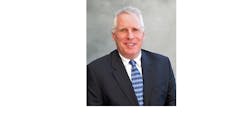Baseball fans re-evaluate the fortunes of their teams at the All-Star break in mid-July around when they have played half of their 162-game schedule. Electrical marketers often do the same with the sales forecasts for their companies after the 2Q 2023 numbers come in.
Electrical Wholesaling forecasted +4.6% growth for 2023 in the Nov. 2023 Market Planning Guide, a number that may end up being a bit low, considering the surprising strong health of the overall U.S. economy.
Forecasting in the electrical market is tricky this year. Although the U.S. economy has managed to avoid falling into the anticipated recession, some key segments of the construction market are still soft and concerns linger with lead times and higher prices. The 2023 construction market is particularly hard to forecast because of all the mega-projects starting up that obscure issues in other segments of the market.
“Construction starts are oscillating — up one month and down the next,” said Richard Branch, chief economist for Dodge Construction Network in the press release. “The presence, or absence, of mega-projects is a key influencer in this trend. Nevertheless, high interest rates and tightening lending standards are leading to uncertainty among owners and developers, also creating hesitation among stakeholders, leading them to carefully assess whether projects will break ground. These conditions will persist through the remainder of the year.”
EW’s editors also like to factor in the quarterly results of the economic survey we do with the Vertical Research Partners (VRP) investment research firm. The 2Q 2023 survey says electrical equipment sales grew +5.5% in Q2 on +4.1% volume growth and +1.4% of price.
VRP analysts said in the report, “In recent quarters, we had been hearing some rumblings that rising interest rates were beginning to take a bite out of commercial construction activity, but the tone this quarter was more optimistic as this has yet to come to fruition. Last quarter, we picked up on some slowing at OEM customers being reflected in orders and we heard echoes of this again.
“Stimulus-related investment does appear to be trickling through, with EV charging activity notable in several geographies. MRO activity again appeared to be broadly robust across a variety of industries including pulp and paper, steel, auto and tire. Energy investments are driving solid activity in the U.S. Gulf Coast.”
Although market conditions have been surprisingly good so far this year, there’s no guarantee they will persist all year. Sweeping defaults on commercial bank loans are a potential powder keg because of the lack of demand for new office space related to the remote officing trend. And the lack of new homes or existing home inventory for new home buyers and comparatively high mortgage rates could eventually cripple the residential building market.
My best guess is that as long as we don’t run into one of the Black Swans DISC’s Chris Sokoll writes about in his article on page 28, the electrical market will avoid any real economic calamities and finish the year in tolerable shape.
About the Author
Jim Lucy
Editor-in-Chief of Electrical Wholesaling and Electrical Marketing
Jim Lucy has been wandering through the electrical market for more than 40 years, most of the time as an editor for Electrical Wholesaling and Electrical Marketing newsletter, and as a contributing writer for EC&M magazine During that time he and the editorial team for the publications have won numerous national awards for their coverage of the electrical business. He showed an early interest in electricity, when as a youth he had an idea for a hot dog cooker. Unfortunately, the first crude prototype malfunctioned and the arc nearly blew him out of his parents' basement.
Before becoming an editor for Electrical Wholesaling and Electrical Marketing, he earned a BA degree in journalism and a MA in communications from Glassboro State College, Glassboro, NJ., which is formerly best known as the site of the 1967 summit meeting between President Lyndon Johnson and Russian Premier Aleksei Nikolayevich Kosygin, and now best known as the New Jersey state college that changed its name in 1992 to Rowan University because of a generous $100 million donation by N.J. zillionaire industrialist Henry Rowan. Jim is a Brooklyn-born Jersey Guy happily transplanted with his wife and three sons in the fertile plains of Kansas for the past 30 years.
